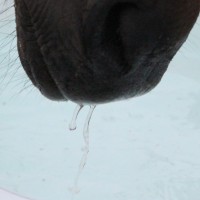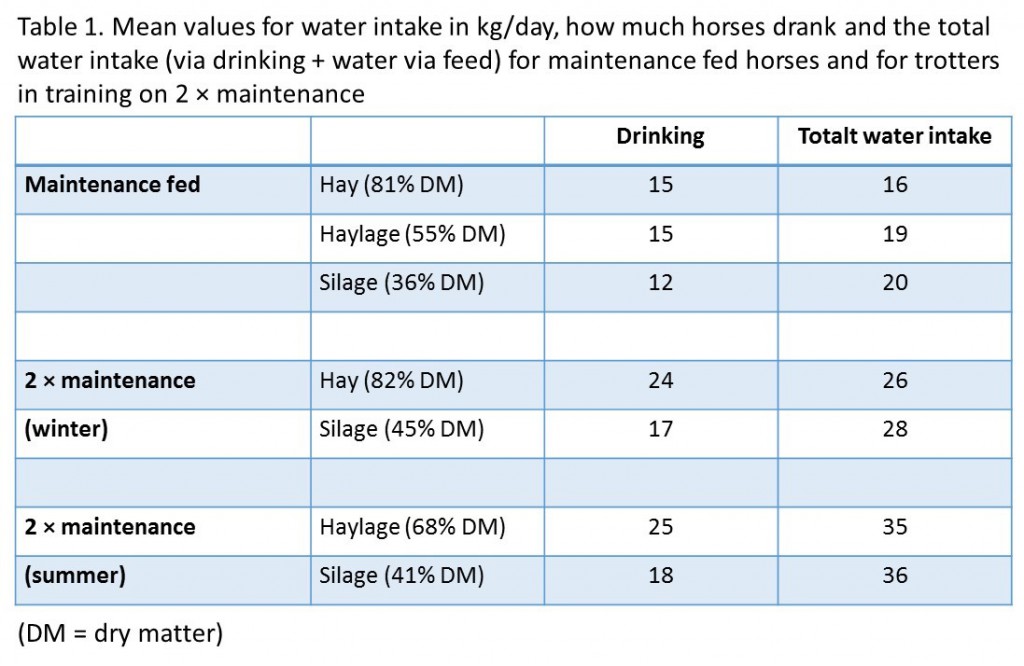On dry forage the horse has to drink more

Forage contain different amounts of water depending on if it is conserved as hay, haylage or silage. Pasture contains the most water, about 80% is water in fresh grass. Hay, which is conserved by drying, should preferably not contain more than 15% water. For haylage and silage in wrapped bales the amount of water varies from about 25% to 65%. What is not water is dry matter (DM), read more about kg DM and kg feed here.
This means that there is a great difference in how much horses drink depending on which forage they eat, dryer forage means they have to drink more. In table 1 below we can see mean values for how much horses drank when they were fed hay, haylage and silage and their total water intake, i.e. drinking + water via feed.
As you can see in the table ambient temperature also has a great impact on horses’ water intake, the trotters in training had a total water intake of 26-28 kg/day during winter and 35-36 kg/day during summer.
Since horses have to drink a lot and even more when they eat dry forage the water supply method becomes very important. Horses can drink large amounts of water very quickly which is probably due to that the wild horse was an easy prey for predators at the watering hole. A study has shown that horses can drink 40% more per day when they drink from a bucket than when they drink from an automatic water bowl with a minute flow of 3 litres. Therefore an automatic water bowl with low flow rate is not consistent with horses’ natural drinking behavior as it has to drink during longer time to consume the same amount of water. The same study showed that with an automatic water bowl with low flow rate the horses risked getting a negative fluid balance with a net loss of body water. When horses cannot maintain normal fluid balance water is absorbed from the hindgut to compensate and protect the intravascular volume, which implies increased risk for impaction and colic. If your horse has very dry faeces it might be a good idea to check the water supply method and how it is working.
Sara Muhonen, AgrD
References:
Muhonen S. 2008. Metabolism and hindgut ecosystem in forage fed sedentary and athletic horses. Doctoral thesis. Acta Universitatis Agriculturae Sueciae 2008:68.
Nyman S. 2001. Water intake and fluid regulation in the horse. Doctoral thesis. Acta Universitatis Agriculturae Sueciae 2001:98.
Nyman S & Dahlborn K. 2001. Effect of water supply method and flow rate on drinking behavior and fluid balance in horses. Physiology & Behavior 73, 1-8.

